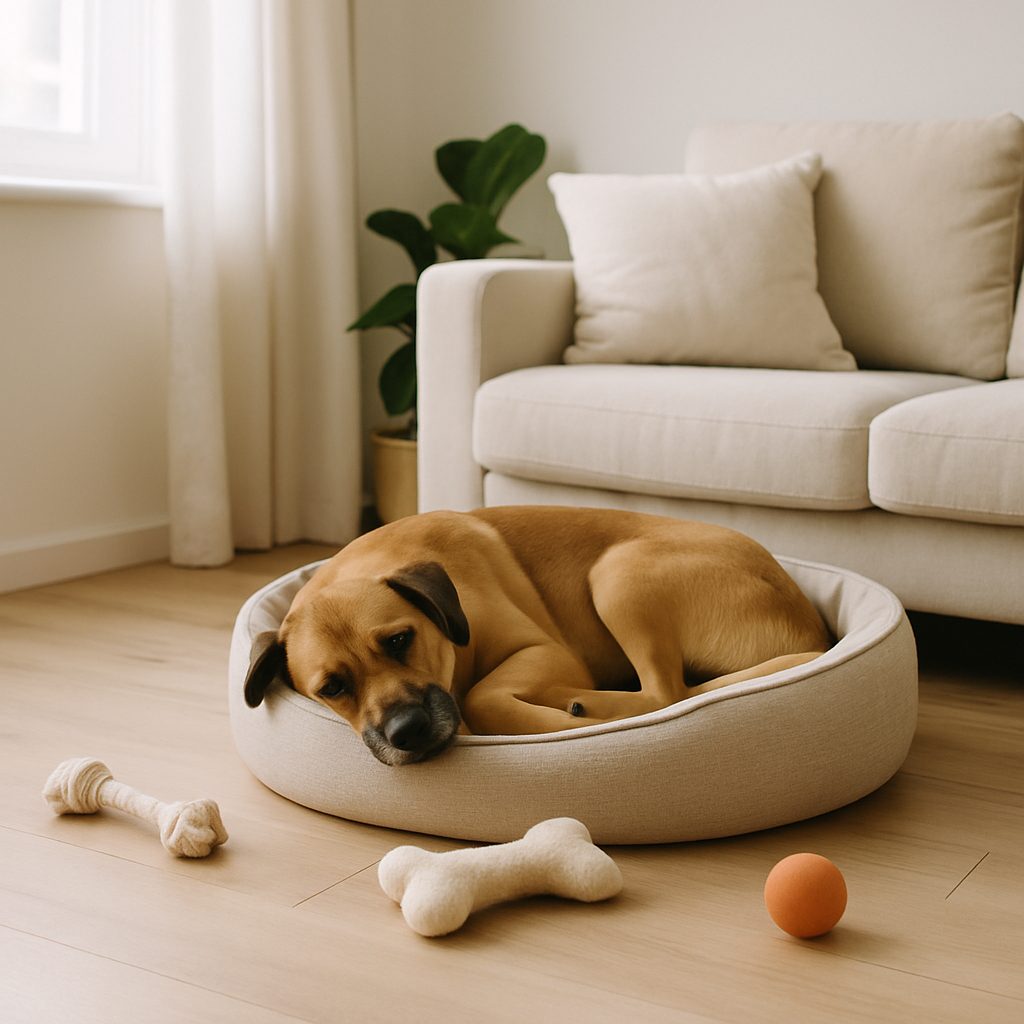How to Prevent Losing Your Dog in an Apartment?
By Lost'Him Team • February 21, 2025

Living in an apartment with a dog presents specific challenges, especially in terms of safety. Unlike a fenced yard, an apartment comes with real risks of escape: open doors, accessible windows, dangerous balconies, or panicked dogs trying to flee.
A dog that escapes may become lost, disoriented, or even injured if they fall from a balcony or run into traffic. So, how can you secure their environment to prevent them from escaping?
1. Secure All Exits to Prevent Accidental Escape
👉 Check Doors and Windows
- Always close windows when you're not home, especially if your dog has access to a ledge or balcony.
- Use safety gates to block access to certain areas (entryways, balconies).
- Be cautious with automatic doors that can open with a nudge or accidental push.
👉 Secure the Balcony: An Underestimated Danger
- A dog may try to jump off a balcony if they see a bird, cat, or another dog below.
- Install a safety net or barrier.
- Never leave your dog unsupervised on a balcony if they are not used to it.
👉 Prevent Escape When Opening the Door
- Teach them to \"sit\" and \"stay\" before opening the door.
- Use an interior safety gate if necessary.
💡 A well-trained dog is easier to manage indoors.
2. Prevent Escapes Due to Boredom and Stress
👉 Provide Sufficient Activities
- Give them interactive toys (Kong, snuffle mats, puzzle games).
- Take them on regular walks: even apartment dogs need 1 to 2 hours of outdoor activity daily.
- Vary their environment to stimulate their sense of smell and mind.
💡 A mentally and physically tired dog is less likely to try escaping.
👉 Manage Stress and Anxiety
- A dog startled by sudden noises (fireworks, storms, construction, loud arguments) may panic and attempt to flee.
- Gradually expose them to stressful sounds.
- Ensure they have a safe space (secure bed, quiet room).
- Teach them to come to you when scared instead of running away.
💡 A confident dog will seek out their owner rather than try to escape.
3. Ensure Identification and Effective Tracking
👉 Mandatory Identification
- Microchip: Essential for quickly identifying a lost dog.
- Collar with ID tag: Even indoors, if your dog escapes, a tag makes their return easier.
👉 Use a GPS Tracker if Necessary
- A GPS collar allows real-time tracking of the dog's movements.
- Some models send alerts if the dog leaves a designated safe area.
💡 A properly identified dog has a much higher chance of being found.
4. Get Your Dog Used to Wearing a Harness and Collar
- Choose a secure harness: \"H\" harnesses or anti-escape models provide better security.
- Gradually accustom them to wearing a collar and harness from an early age.
💡 Good equipment is a valuable safety asset for your dog!
Conclusion: Safety and Well-being to Prevent Escapes
- ✅ Secure the environment (doors, windows, balcony).
- ✅ Train your dog to wait calmly before opening a door.
- ✅ Meet their stimulation needs (walks, games, chewing).
- ✅ Provide a reassuring environment to reduce stress and fear.
- ✅ Ensure proper identification and use GPS tracking in case of accidental escape.
💡 By implementing these precautions, your dog will be safer, more secure, and less tempted to escape. 🐶🏡
 EN
EN  FR
FR